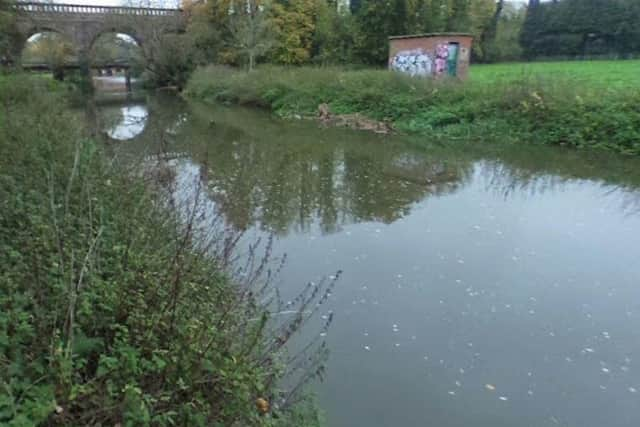4,500 hours of untreated sewage outfalls into River Mole area so far this year
and live on Freeview channel 276
The River Mole River Watch (RMRW) , which is calling for clean water for the health of wildlife and people, tracks sewage outflows and storm discharges by the utility giant and said that February “saw the highest recorded duration of storm overflows of any month we have been testing so far”.
The group said the February figures topped the 2115 hours from January with the majority of the damage coming from the nine big sewage treatment plants.
Advertisement
Hide AdAdvertisement
Hide AdBoth Thames Water, which maintains over 68,000 miles of sewers, and manages 354 sewage treatment works, and RMRW said the pollution was more diluted than normal due to the heavy rain.


Thames Water has also said it is carrying out improvement work across its network.
Campaigners though said the sheer volume of untreated waste meant the”absolute load” of phosphates would be “much larger during wet months”.
Posting to their website, RMRW said: “Some sewage works were discovered to be failing so badly that storm tanks overflowed outside the treatment works in a cascade of raw sewage that flooded footpaths and recreational fields.
Advertisement
Hide AdAdvertisement
Hide Ad“Despite the long duration of sewage overflows and perhaps contrary to expectations, our February pollution tests recorded some of the lowest phosphate levels in the 10 months of testing so far.
“While lower concentrations of phosphate are measured by our Hanna low range meters, the absolute load of phosphate entering our rivers will nevertheless be much larger during wet months. This is due to the long duration of untreated sewage outfalls added to the other pollution sources such as misconnections, road and farm runoff.”
Thames Water is the only firm to give live updates to its sewage overflows, or storm discharges.
The data received from its monitors isn’t always accurate and only indicates rather than confirms discharges.
Advertisement
Hide AdAdvertisement
Hide AdThe company says in makes the information immediately available to open to allow customers to make more informed decisions. Verified data is published annually.
A spokesperson for Thames Water said: “Storm overflows are designed to operate automatically when the sewer network is about to be overwhelmed which then releases diluted wastewater into rivers, rather than letting it back up into people’s homes.
“We regard any untreated discharges as unacceptable, and we’re committed to stopping them from being necessary, with the assistance of our regulators.
“We’re currently spending £34milion upgrading Crawley sewage works, as well as spending £23million improving our site in Burstow. These upgrades are due to complete in 2024. We’ve also started a £14million upgrade to Dorking sewage works and we have plans to upgrade our Earlswood, Esher, Holmwood, Horley, Leatherhead and Merstham sites.
Advertisement
Hide AdAdvertisement
Hide Ad“Taking action to improve the health of our rivers is a key focus for us and we are leading the way with our transparent approach to data. We remain the only company to provide live alerts for all untreated discharges and this ‘near real-time’ data is available to customers as a map on our website and is also available through an open data platform for third parties, such as swimming and environmental groups to use.
“We have published plans to upgrade over 250 of our sewage treatment works and sewers to treat the high volumes of incoming sewage and reduce the need for overflows during wet weather.”